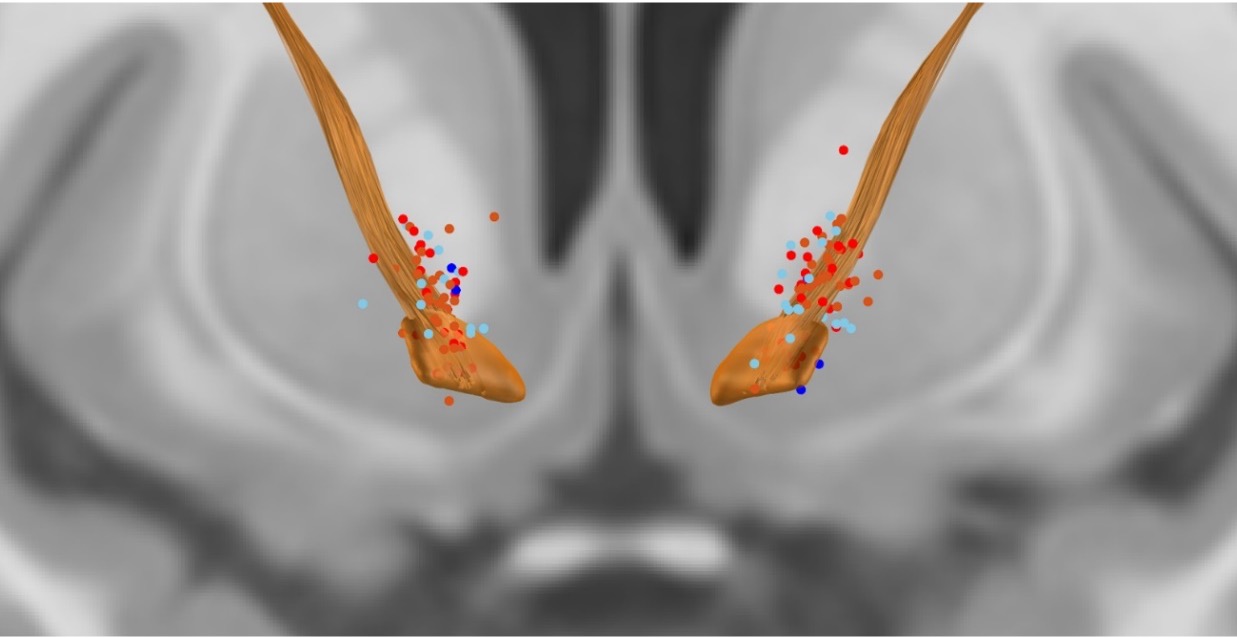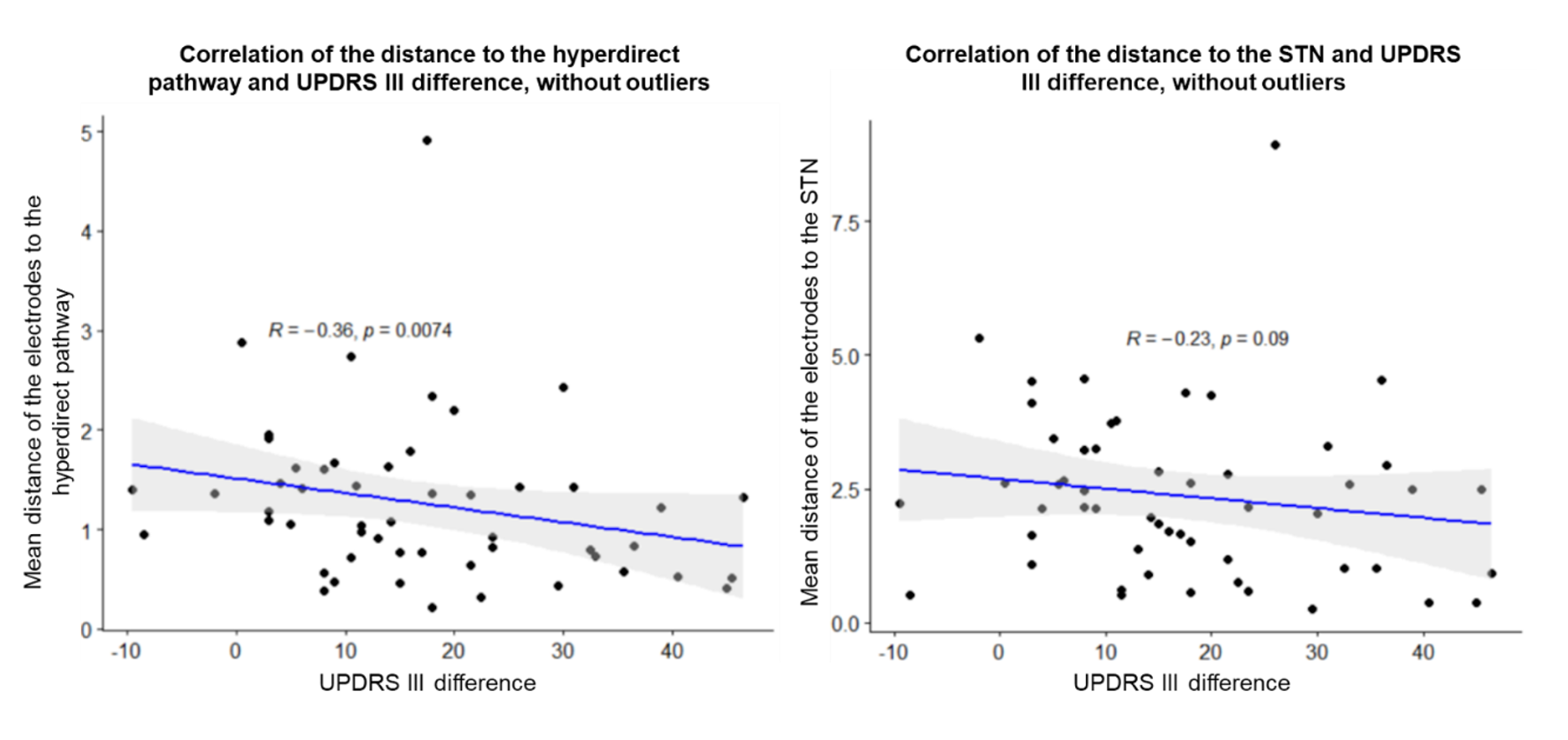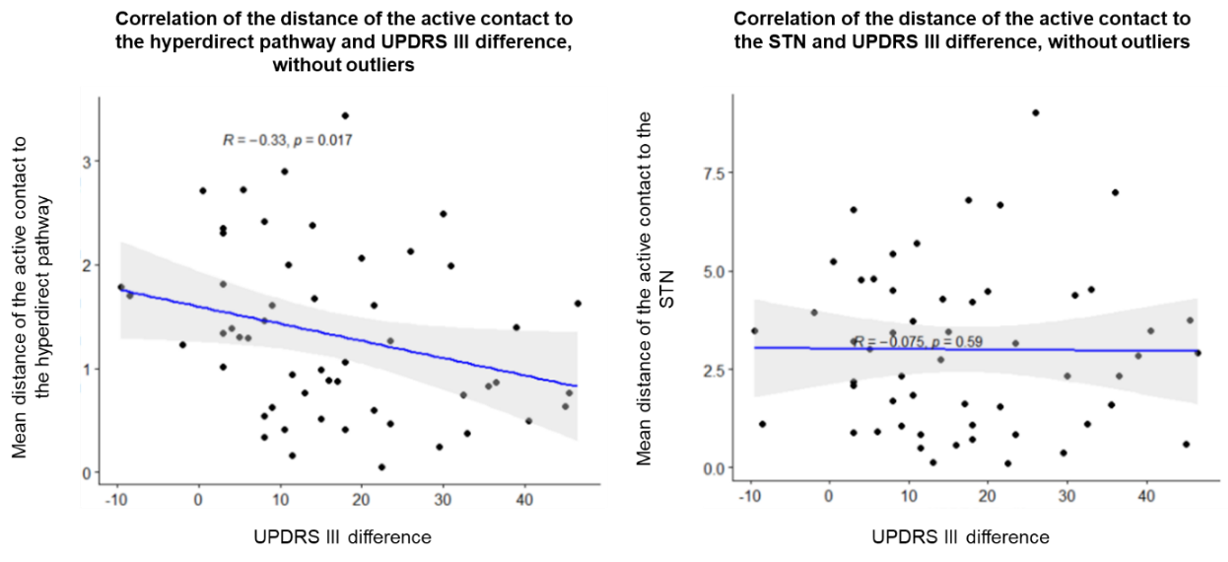Category: Surgical Therapy: Parkinson's Disease
Objective: To study the relationships between clinical response and leads location -in a cohort of Parkinson’s disease (PD) patients and deep brain stimulation of subthalamic nucleus (DBS-STN).
Background: DBS is an effective therapy for advanced PD patients, and the precise placement of the leads in the STN is related to clinical improvement. Nonetheless, patients with little deviations on the leads also show clinical improvement, and the neural correlates of these improvements are not well known.
Method: 55 patients with advanced PD and STN-DBS were retrospectively included (mean age at DBS: 61 ± 7.93 years, 23/55 females, mean disease evolution: 14 ± 3.6 years). Clinical, radiological and follow-up data were obtained at baseline and at six months follow-up. Lead DBS software was used to reconstruct the leads of all the patients and compared with the gold-standard reconstructions (Brainlab Elements). The Lead Group toolbox was used in order to estimate distances to subcortical structures and white matter tracts that were related to symptom improvement. Moreover, the clinical improvement was correlated (Spearman’s rank-correlation) with the position of the leads using sweetspot analyses [figure1], as well as the cortical repercussion of the stimulation.
Results: Mean score of UPDRS III was 50.9 ± 16.60 points (baseline) and 33.89±13.87 (six months follow-up). This clinical improvement showed a correlation with the mean localization of the lead contacts, with similar distances to both the STN (p = 0.09) and to the motor pathway of the STN (p = 0.007) [figure2]. However, only a significant correlation between active contacts and proximity to the motor pathway was found (p = 0.017), whereas no significant correlation with the proximity to the STN was evident (p = 0.59) [figure 3].
Conclusion: Although the STN -and more precisely, the dorsolateral area-, is the main target of the DBS in PD, the patients who had active contacts closer to the white matter tracts emerging from the STN showed more correlation to meaningful clinical improvement. Even though the stimulation of the STN has important clinical benefits, clinical improvement could also be related to the stimulation of the motor pathway.
To cite this abstract in AMA style:
J. Garcia-Cornet, B. Pascual-Sedano, A. Campolongo, JA. Aibar-Duran, R. Rodriguez-Rodriguez, J. Kulisevsky, I. Aracil-Bolaños. Sweetspot analysis of Deep Brain Stimulation in Parkinson´s disease: Beyond the subthalamic nucleus? [abstract]. Mov Disord. 2022; 37 (suppl 2). https://www.mdsabstracts.org/abstract/sweetspot-analysis-of-deep-brain-stimulation-in-parkinsons-disease-beyond-the-subthalamic-nucleus/. Accessed April 3, 2025.« Back to 2022 International Congress
MDS Abstracts - https://www.mdsabstracts.org/abstract/sweetspot-analysis-of-deep-brain-stimulation-in-parkinsons-disease-beyond-the-subthalamic-nucleus/



